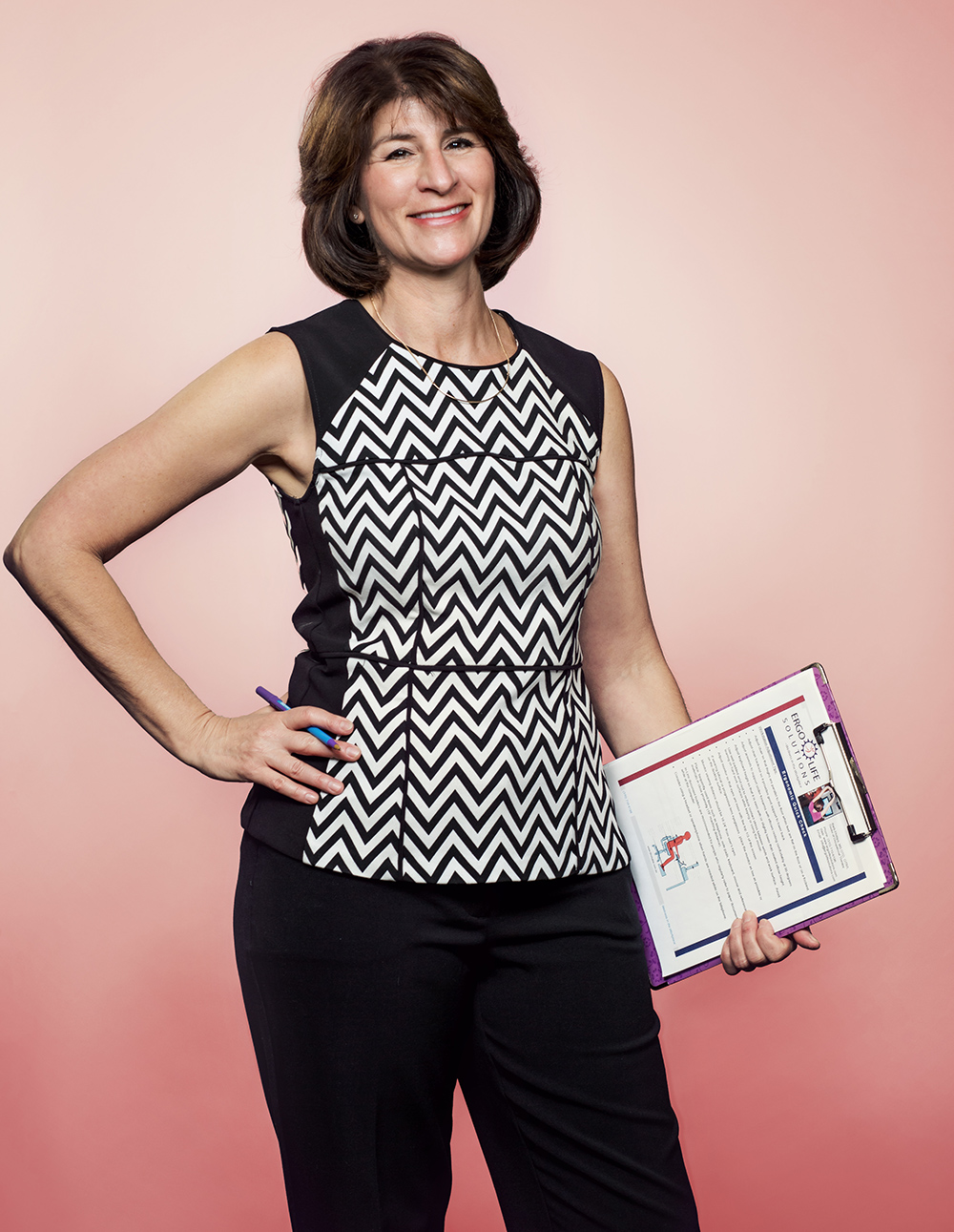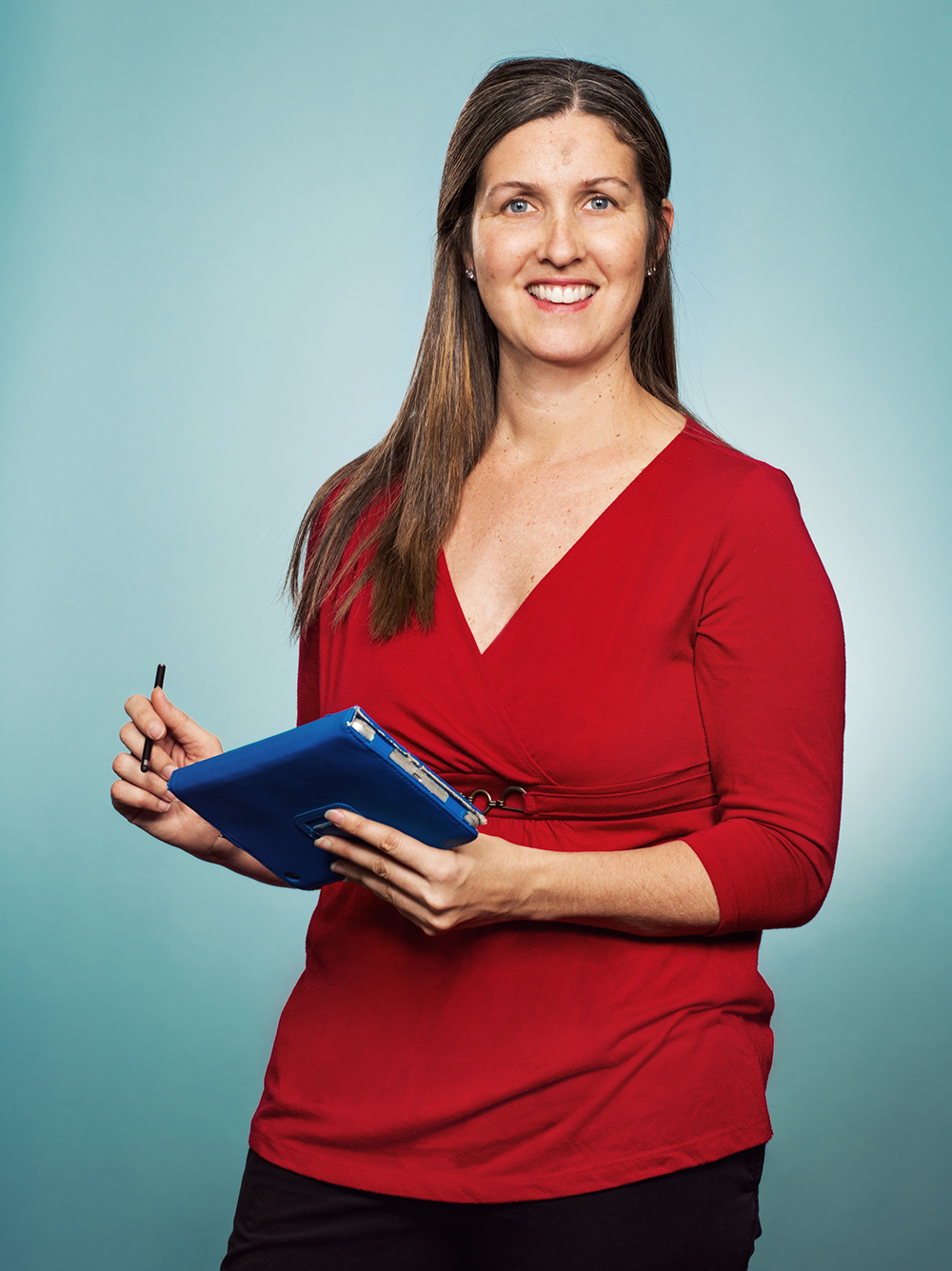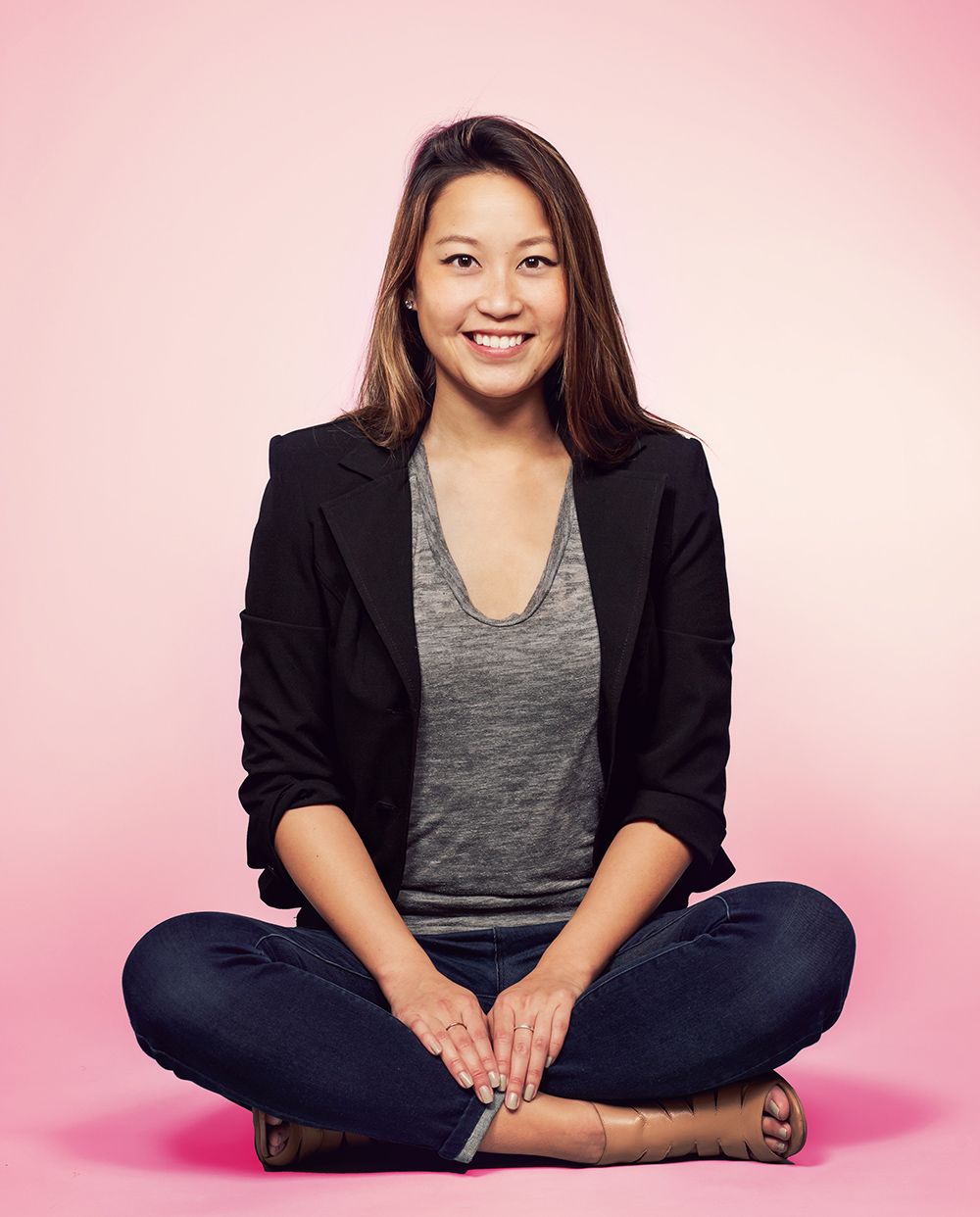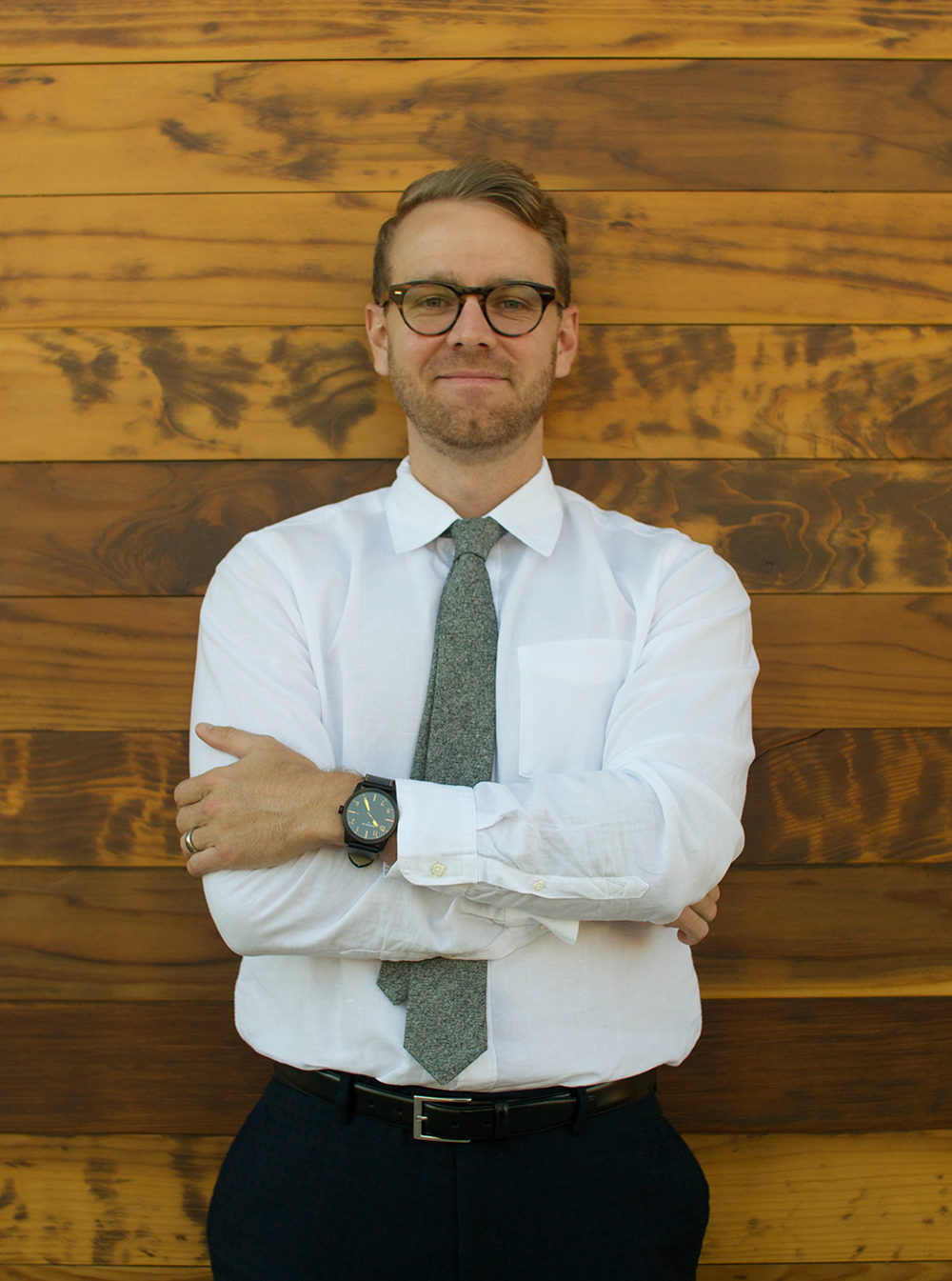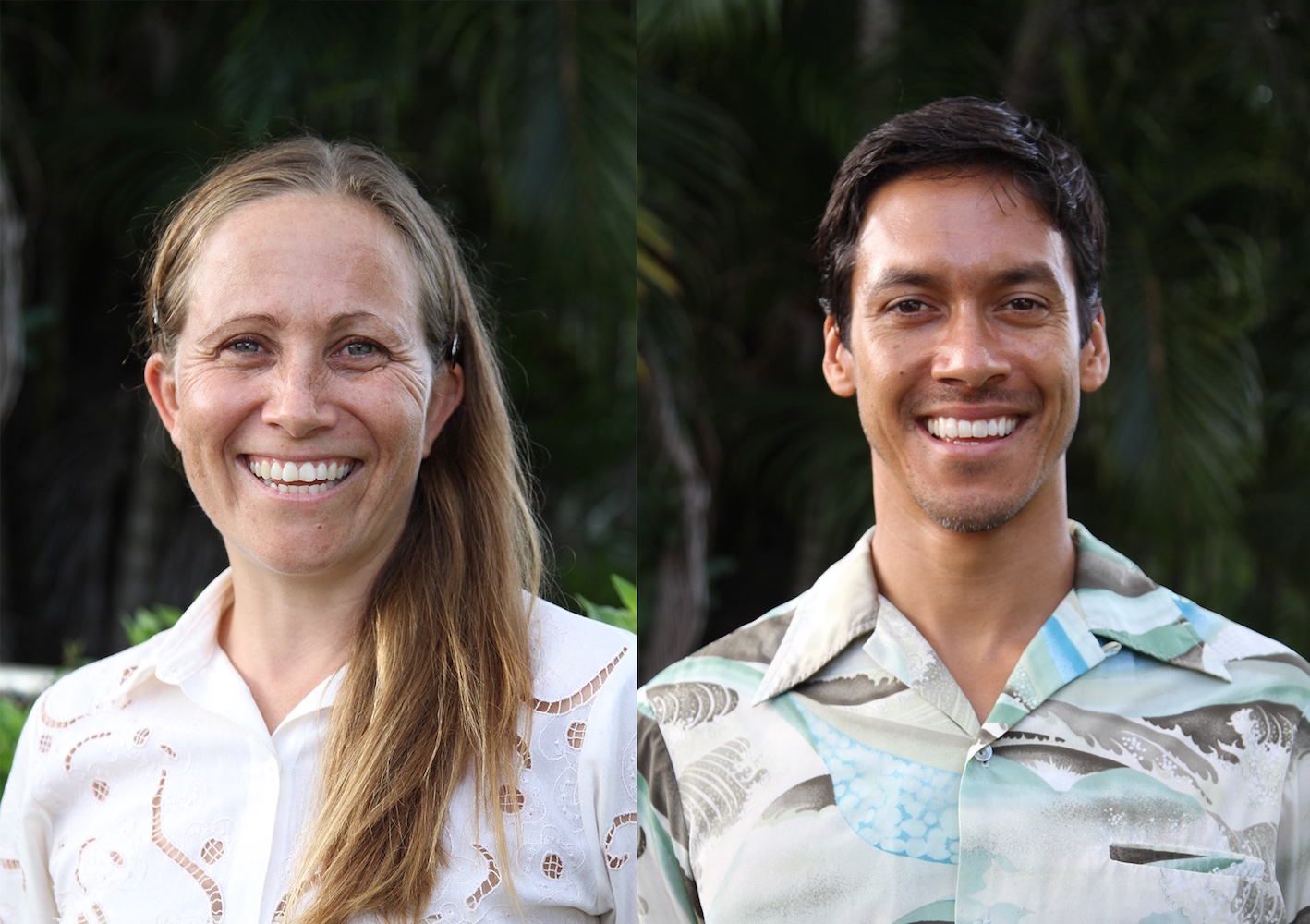A Head For Business
Meet six alumni who've combined their expert clinical skills with an intrepid entrepreneurial spirit to blaze their own trails.
By John Hobbs MA ’14; Mike McNulty ’06, MA ’09, OTD ’10; and Yasmine Pezeshkpour MCM ’16
They are some of occupational therapy’s big thinkers. They are risk takers. They are innovators. Where others zig — for example, the more than 60 percent of OTs who choose to practice in hospitals, long-term and skilled nursing facilities and schools, according to the 2015 AOTA Salary and Workforce Survey — these intrepid few zag, finding new, exciting ways to practice occupational therapy or incorporate their expertise into other industries altogether. Many work long hours, sometimes juggling two or three job commitments to make sure their dream of business ownership comes true. And they do it all with entrepreneurial spirit. Meet just a few of the alumni who have taken the expert clinical and research skills they’ve gained at USC Chan and forged their own path toward a career of their dreams in occupational therapy.
Barb Phillips OTD ’11, CEO, Ergo Life Solutions
Sitting across from her banker’s desk, Barb Phillips notices him typing on an unsteady keyboard. Politely she stops him and flips out the other leg of the keyboard.
“Try that,” she says as he begins typing again. “Better, right?”
These are exactly the types of recommendations that Phillips makes for people through her business Ergo Life Solutions.
The self-described career problem solver created a business out of helping people get out of pain and back to work.
Her occupational therapy journey didn’t start in ergonomics, though.
“I really wanted to do more than just ergonomics. I felt my training and education left me with so much more to offer.”
“I worked for a few years in community-based settings and with people with disabilities,” Phillips says. “I always enjoyed working with people with disabilities and imagined my career continuing down that track.”
Phillips moved to Southern California in 1993 to work at Rancho Los Amigos National Rehabilitation Center, where she was introduced to and later took part in Florence Clark’s Lifestyle Redesign pilot class in 2001.
“Dr. Clark’s class gave me a whole new perspective on how occupational therapists can work in the community and make a difference in people’s lives,” Phillips says. “Her words also inspired me to continue my degree.”
Phillips was accepted into the division’s OTD program in 2008. During her program, she worked for the City of Los Angeles, where she set up the ergonomic program.
“I really wanted to do more than just ergonomics,” Phillips says, referring to the challenge of business ownership. “I felt my training and education left me with so much more to offer.”
In 2012, Phillips left her job with the city and launched Ergo Life Solutions.
With her new business up and running, she was finally able to use her skills in compassionate care to listen to her clients and observe their situations as an ergonomic consultant.
“Different ergonomists do things differently,” she says. “Some people make a list of all the things their clients should implement, but my goal when I’m working with someone who’s in pain is to get them out of discomfort, no matter what I have to do.”
She’s also been known to use old books to prop up computer monitors or to duct tape stuffed animals to chairs as cushioned armrests.
With clients ranging from the L.A. Zoo to the NFL Network, Phillips says the most rewarding part of her job is the instant gratification. “Making minor adjustments and seeing my client’s reaction is extremely rewarding,” she says. “I even helped a client avoid surgery on her back from an adjustment at her work station.”
Phillips credits much of her success back to what was ingrained in her at the division.
“As soon as you start the program you are treated like a leader in the profession and you’re forced to think like one,” she says. “You’re working with people of mixed experience levels, creating real programs, and my classmates were absolutely fearless. I am so grateful for my classes and my education, but my classmates really inspired me to take challenges head on.”
Client Profile: Erika Salgado
For months, Erika Salgado experienced pain radiating from her shoulders to her lower back. To ease the pain, the human resources executive would try to adjust her workspace, but she continued to feel discomfort.
Salgado’s employer, Pankow Builders, offered her an ergonomic consultation with Barb Phillips, who did a complete evaluation of Salgado’s workplace, including position measurements of her computer screens, phone, printer and chair.
Phillips realized that Salgado’s office floor was unbalanced. She adjusted Salgado’s equipment, including moving her entire work station to a different position so that she was able to work more comfortably. “My life has changed significantly,” Salgado says. “I am no longer in pain, and I’m more comfortable in my workstation than I have been in all my 18 years working.”
Charissa C. Sims MA ’00, President and CEO, Ergolution
Charissa (Shaw) Sims MA ’00 had a stable career working as an in-house ergonomics specialist for Corporate America when she realized she had much more to offer her clients with her clinical skills as an occupational therapist.
This professional epiphany led her to start her own ergonomics consulting business called Ergolution.
When Sims was applying to occupational therapy schools, she didn’t realize the myriad opportunities the profession had to offer.
In the late ’90s, Sims decided to follow a track in ergonomics, which she learned about in one of her classes at USC Chan. “We had a speaker in our geriatrics course one day who seemed to speak directly to my heart,” Sims says. “She talked about ergonomics and how it is a great field for occupational therapists to pursue. So I began to do my research.”
“Everything is hard; even having a regular job. It is part of life and it makes you a better person through the struggle.”
Sims got in touch with local ergonomics consultants in Southern California and asked to shadow them.
Soon after, she landed her first job at UCLA Ergonomics, where she worked for six months. It was during her next job at Raytheon, where she worked from 2002 to 2004, that Sims realized the clinical and leadership skills gained at USC Chan were being underutilized.
“What first inspired me was that I wanted to do more things than my boss and department would let me,” Sims says. “I saw many opportunities to change the culture but was limited. I saw my ticket to freedom and flexibility was starting a consulting business!”
She launched Ergolution in 2003, with her first and long-standing client City of Hope coming to her through a referral from one of the chair vendors she had previously worked with.
These days Sims gets new clients through a bid process or referrals. She also uses her website and social media sites such as LinkedIn and Maven as tools to gain new business.
As CEO of Ergolution, Sims not only runs business development, but she also works with her clients directly by providing ergonomic program management, software and training. She also does workplace evaluations, making recommendations on tools or furniture modifications, such as new chairs or work equipment.
“Working with clients from industrial settings is very different than clients in office settings, and many of the recommendations are customized and unique,” she says of her constantly growing client base.
Sims has worked with everyone from truck drivers to insurance brokers, but she says, despite their different vocations, their discomfort tends to be the same.
“The most common injuries or areas with pain among my clients is the lower back followed by eye issues and then neck, wrist, shoulder, buttocks, knees and feet,” she explains. “It’s my job to figure out the cause and alleviate the discomfort.”
While she admits running a business has its challenges, to her, the benefits outweigh the negatives. Pursuing her entrepreneurial endeavor has given her more time for family and the additional flexibility to pursue other opportunities.
“I’ve developed products, ergonomic software and am now working on an ergonomics app for your phone,” she shares. “On the side, I wrote and self-published a children’s book, Kinley the Water Dragon, that teaches kids how to conserve water.”
Sims believes being interested and inspired by your work helps during those tough times as a small business owner. “Everything is hard; even having a regular job. It is part of life and it makes you a better person through the struggle,” she says.
“Still it’s rewarding that I have the power to eliminate someone’s pain through demonstrating a stretch, adjusting their workstation or changing their posture.”
Client Profile: Amber Bill
Amber Bill was a new employee at the City of Hope Medical Center when the employer contracted Sims to conduct ergonomic interventions for its employees.
Sims worked closely with Bill — not only to do an ergonomic evaluation of her office space but also to help the new assistant director establish a long-lasting program at City of Hope.
“Charissa helped fill a gap in our company by providing ergonomic assessment needs for our staff in locations hard for us to logistically get to,” Bill says.
“She has also helped me personally by providing training and guidance on how to conduct ergonomic assessments and how to properly document reports.”
Jessica May Tang MA ’13, Owner, Damon Lifestyle Consulting
Deann Kato ’68’s goal was simple: She wanted to be able to sit on the floor and play with her 4-year-old grandson for 30 minutes.
The once incredibly active 68-year-old retiree, who had been suffering from chronic neck and back pain and had undergone cervical lumbar fusions, approached USC Chan alumna and new business owner Jessica May Tang MA ’13 to help her achieve this rather modest goal.
Part life coach and part occupational therapist, Tang guided Kato toward her objective through one-on-one at-home sessions.
Together, the two set up an exercise and stretching program, discussed activity pacing and energy conservation strategies and even worked on fall prevention techniques and pain management.
With Tang’s help, Kato eventually played on the floor with her grandson for 45 minutes.
“There was a sense of freedom,” Kato says of reaching her goal. “I felt proud of myself to achieve something that had been unattainable to me for a long time.”
Effecting this type of lifestyle change was precisely what Tang envisioned when she started her own business Damon Lifestyle Consulting earlier this year.
The burgeoning business, which serves clients across Southern California, aims “to assist individuals in creating healthy habits, routines and goals toward living their best lives,” according to its website.
Through her business, Tang works with clients to create personalized treatment plans for everything from stress and anxiety management to caregiver support to pain management.
“I come home after work some days and work some more until midnight, then go to bed and start it all over again.”
“I really like working with people in chronic pain and with other chronic medical conditions,” she says. “I assess their entire lifestyle — their body, their routine, their habits, their environment and their values — and talk about where their life is right now and where they’d like to see themselves.”
A case starts with a free 15-minute consultation — typically in the would-be client’s home.
“I like to do it that way because I get to see what their environment is like,” Tang says, “and how they choose to interact with that environment, and I can make adjustments right away.”
From there, Tang charges anywhere from $50 to $150 a session, depending on the number of sessions the client purchases.
Still in her first year of business ownership, Tang admits its not been an easy road. “Let’s just say the easiest part was getting the DBA,” she jokes, referring to registering the company’s legal name.
Learning how to write a business plan, how to market something as unknown to lay audiences as occupational therapy and how to finance a small business have presented Tang, a self-described life-long learner, a steep learning curve.
She thinks these skills should be taught in an elective course during one’s occupational therapy education.
“I think that would be an interesting elective to have at USC in case you’re interested in going out and starting a small business,” she says.
Though, with less than 10 percent of occupational therapists opening their own practices, the course could be a hard sell for most programs.
While Tang grows her business, she’s had to continue working part-time at a hospital and an outpatient clinic.
“I get up really early everyday and work on my business,” she says. “I come home after work some days and work some more until midnight, then go to bed and start it all over again.”
But she says the satisfaction of seeing her clients’ epiphanies about their lives helps fulfill her through those long days.
“Whenever someone has an ‘Aha!’ moment about how they’ve been looking at their life or when they realize there’s so much they can do and how much control they have over their lives to change, that’s very satisfying,” she says.
Client Profile: Allison Kato
Having seen her mother’s success with Damon Lifestyle Consulting, Allison Kato MBA ’09 — daughter of Deann, the 68-year-old grandmother who sought to play with her grandson despite her back pain — purchased a session with Jessica May Tang to help her and her husband deal with their own chronic low back problems.
“I was surprised at how effective Jessica was at identifying the root cause of my pain,” says Allison, 36, who was 5 months pregnant when Jessica visited the couple’s home to see how they interact with their environment.
“She suggested exercises and adjustments to our posture that have made a big impact on our day to day life,” Allison says.
“The session taught me that occupational therapy is beneficial for anyone at any age and can help address many different challenges.”
Sean Sullivan MA ’13, Owner, Dollar Safety Network
When Sean Sullivan MA ’13 launched Dollar Safety Network in early 2015, he knew that flexibility would be integral to realizing his business goals.
“I didn’t care what hat I wore — occupational therapist, ergonomist or home modification expert,” Sullivan says, reflecting on his small business’ start-up phase. “What I did was survey the community and ask the question, ‘Is there a need out there that’s not being met?’ Because I can fill unmet needs.”
“When people encounter barriers, it makes life less worth living. What I do is remove those barriers to make life more worth living.”
As he surveyed the community, Sullivan identified a gap between the concentrated populations of older adults who actively consume health care services and those who don’t. That gap is a substantial one: According to 2012 data from the Agency for Healthcare Research and Quality’s Medical Expenditure Panel Survey, the top 5 percent of health care consumers in the Medicare population are responsible for 38 percent of total spending.
“I saw a potential middle market — a wife or a husband, a mother or a father, who doesn’t have many immediate needs but is legitimately concerned about their long-term ability to age successfully and at home,” Sullivan says.
That concern likely reflects older adults’ overwhelming preference for aging at home. A 2010 survey conducted by the American Association of Retired Persons found that 88 percent of respondents age 65 and older want to remain in their current place of residence for as long as possible.
Sullivan started Dollar Safety Network with the goal of empowering his clients to lead safer, more satisfying lives in their own homes. For the price of one dollar per day for an annual membership to Dollar Safety Network, the Orange County-based Sullivan visits customers in their home and leads them through a comprehensive evaluation aimed at analyzing their specific degrees of risk exposure.
“I learned to code and build algorithms well enough to develop a digital risk assessment tool that measures 300 discrete threats to a person’s health and safety,” Sullivan says. Categories of risk analysis include health history, physiology, cognition, environment, support availability, post-surgical and illness specific risks and activities of daily living. During the assessment, clients complete brief interviews and demonstrations and participate in interactive games including digital apps.
Knowing those targeted risk areas, Sullivan then provides clients with individualized education, equipment, community resources and easy-to-understand strategies that can decrease their overall degree of risk exposure. Solutions can be as intuitive as suggesting kitchen tools that compensate for decreased grip strength while cooking, or as involved as bringing a contractor into a client’s home for renovations. Sullivan also provides traditional home health occupational therapy services.
“I think of myself as a matchmaker to help people get the services that they need,” Sullivan says.
And his services are in demand. Since hanging his own shingle in early 2015, Dollar Safety Network has been growing at approximately 17 percent each month.
The young entrepreneur has also learned crucial business lessons along the way, chief among them the importance of sustainable, organic growth.
“Not every business needs to be a full-time commitment right away,” Sullivan says. “What matters is finding the right scalability model for you.”
What Sullivan has indeed found is a business model that not only works but makes substantive improvements in the everyday lives of people in his community. No matter what hat he wears on any given day, Sullivan’s passion for assisting others is tangible.
“When people encounter barriers, it makes life less worth living,” he says. “What I do is remove those barriers to make life more worth living.”
Client Profile: Marion Littlefair
America’s population of nonagenarians — older adults aged 90-and-older — has nearly tripled since 1980. Retired school teacher Marion Littlefair, 90, is a new member of this esteemed demographic which, although growing rapidly, still has unique health concerns. Dollar Safety Network’s Sean Sullivan was put in touch with Littlefair to conduct his proprietary risk assessment to pinpoint her personal needs and build safeguards around them. Not surprisingly, Littlefair showed signs of typical aging such as faltering memory, instability while walking and declining energy for sustained activities during the day. Sullivan’s in-home services that followed have markedly improved her quality of life, making changes that even Littlefair’s caregiver has noticed, including increased motivation to get out of bed during the day and stay active and engaged in her home. Dollar Safety Network, in Littlefair’s own words, is “about making it easier to stay in my home.”
Catia Garell ’01, MA ’02 & Damian Sempio ’01, Owners, Thrive for Life LLC
Imagine you’re a 27-year-old man whose life has been forever changed after a car accident left you with a spinal cord injury.
If you choose to remain in your home, there will need to be some modifications made — entry ramps added, hallways widened, showers made for wheelchair accessibility — so you can navigate daily life in a wheelchair.
At this point, you might Google a good local contractor to redesign your living space, which is what one of Thrive for Life LLC’s Maui-based clients did recently to give him greater autonomy in his bathroom.
“It was all ADA-compliant; the measurements were perfect; the grab bars were where they should be,” explains Catia Garell ’01, MA ’02, Thrive for Life co-owner. “But it was a good example of needing the clinical skills of an occupational therapist because the contractor didn’t take into account his bowel and bladder program.”
Garell explains that the client often felt lightheaded after using the bathroom and needed to have his legs elevated while showering — something the contractor didn’t know and the client didn’t think to share. The contractor had built the shower without enough space for the client’s legs to be elevated.
“We had to go back in and redo the entire job,” she says. “It was a good example of where our clinical background and medical skills can truly support function.”
“Clients often come back to us and say it’s been a life-changing experience for them, and that it’s improved their quality of life.”
Home modifications made with the expertise of an occupational therapist is the business of USC Chan alumni Garell and Damian Sempio ’01, who in 2011 started Thrive for Life LLC, which serves the entire state of Hawaii.
“The two fields of construction and health care are polar opposites,” Sempio explains. “You have ‘Contractor Joe’ coming in with his hammer, ready to knock down walls, not necessarily thinking about the specific occupational therapy needs of the client.”
Through Thrive for Life, Garell and Sempio have helped individuals ranging from medically fragile children to young adults who’ve suffered catastrophic accidents to elderly individuals, all of whom need guidance through the process of home modification.
The small business’ goal is “to simply modify your home environment so you and your loved ones can comfortably ‘age in place’ for the rest of their lives,” according to its website, thriveforlife.com.
The process starts with an assessment, where Garell and Sempio meet the clients and their caregivers. They look at the client’s medical history, take measurements and assess the client’s daily tasks, specifically focusing on areas where they might face barriers.
While their clients range in age, one particular area of interest for Garell and Sempio is the elderly. With the U.S. census projecting the number of elderly in America to double by 2050 and the annual price of a nursing home in Hawaii exceeding $150,000, Garell and Sempio saw a need. They wanted to help ensure more elderly individuals could stay in their own homes instead of having to transition into assisted living environments.
Both Garell and Sempio have Certified Aging in Place Specialist designations as well as Executive Certifications in Home Modification from the USC Davis School of Gerontology.
Once the team — comprised of draftsmen, designers and contractors — has gathered the information needed, they detail a few construction concepts for the client and their family to choose from.
After a plan is selected, Garell and Sempio guide their clients through the process from collecting contractor bids to filing the appropriate paperwork for permits to conducting a comprehensive post-construction assessment where they watch their client in their new space.
“Clients often come back to us and say it’s been a life-changing experience for them, and that it’s improved their quality of life,” Garell says.
“There’s a sense of satisfaction in being able to design something that creates this huge smile and makes the families safer and the homes more accessible for everyone,” Sempio adds.
Client Profile: Ryan Cadirao
Bath time for Ryan Cadirao used to be a real challenge. A narrow bathroom door and cramped layout left his caregivers little choice but to lift the 15-year-old with mitochrondrial myopathy from his wheelchair, carry him inside and, while balancing on one foot, shut the door behind them with the other.
“It got to a point where carrying him became too difficult,” explains his mother Caroline Cadirao, who hired Thrive for Life to oversee home modifications to make the home more accessible.
“Damian and Cat’s understanding of our needs really made the process go smoothly.” As to whether Ryan, who’s not able to express himself verbally, likes the changes or not: “He’s never cared for baths anyway,” his mom says with a laugh. “But they put in this tilting mirror, and when we wheel him past, he just loves to smile at himself.”
⋯







